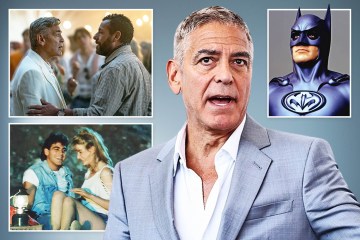Heartbroken George Clooney reveals his sister has died aged 65 as Hollywood star pays tribute to her ‘courage and humor’
GEORGE Clooney is mourning the loss of his sister Adelia Zeidler who has died aged 65.
The Hollywood star’s sibling passed away on Friday (December 19) following a battle with cancer.
Clooney, 64, described his sister – known as Ada – as his “hero” and praised her bravery.
He said: “My sister, Ada, was my hero. She faced down cancer with courage and humor.
“I’ve never met anyone so brave. Amal and I will miss her terribly.”
Ada’s official biography says she died “peacefully” while “surrounded by the people she loved” at St Elizabeth healthcare in Kentucky.
‘Talented artist’
She was born on May 2 1960 in Los Angeles to mum and dad Nina and Nick, and was described as a “talented artist”.
She was named after her great-grandmother.
Her obit states: “A talented artist, she shared her skills as an elementary art teacher at Augusta Independent School for several years.
“In high school, her academic achievements qualified her to be a National Merit Scholar.
“Her love for reading connected her with other readers in a local book club.
“She was also a member of the Augusta Art Guild and was a past grand marshal of Augusta’s Annual White Christmas Parade.”
Ada married Norman Zeidler, a retired army captain, in Augusta in 1987.
While she led a very private life, she supported her brother publicly over the years, including attending his wedding to wife Amal in Venice in 2014.
Ada was snapped standing next to Clooney on a boat as they rode along a canal in the Italian city.
The siblings grew up together in Kentucky.
Clooney told CBS This Morning in 2015: “My sister, I’m very close to.”
Their mum Nina told HGTV in 2006 how she once came home to find her children had thrown a house party, and had thrown cooked marshmallows all over the walls.

